Jimmy Tobin
Towards a Single ASR Model That Generalizes to Disordered Speech
Dec 26, 2024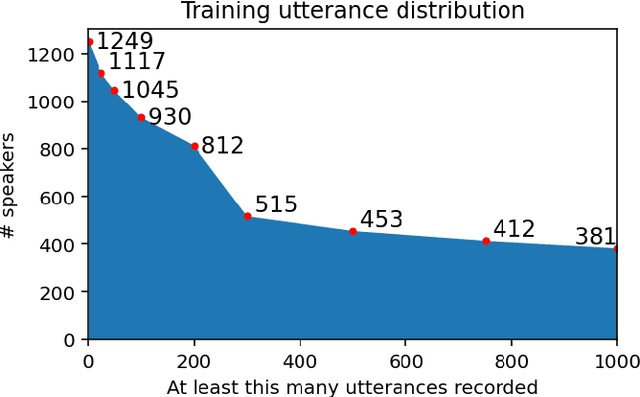
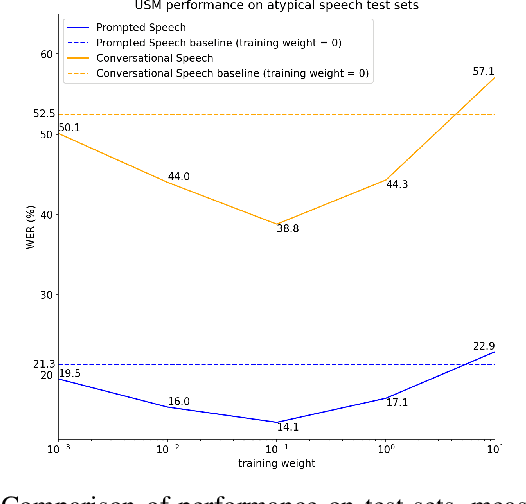
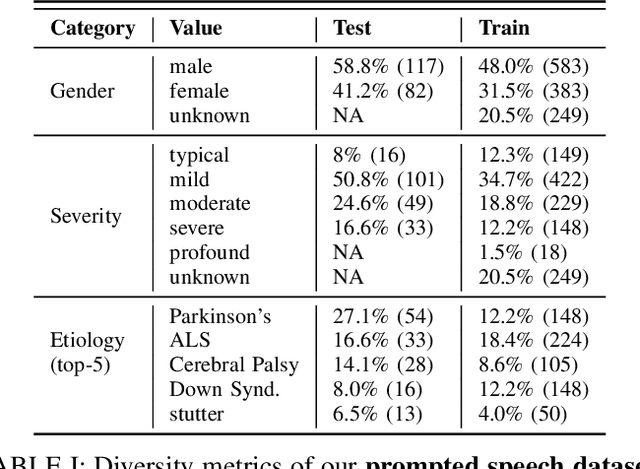
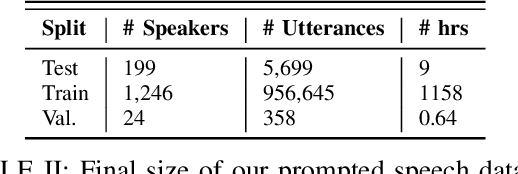
Abstract:This study investigates the impact of integrating a dataset of disordered speech recordings ($\sim$1,000 hours) into the fine-tuning of a near state-of-the-art ASR baseline system. Contrary to what one might expect, despite the data being less than 1% of the training data of the ASR system, we find a considerable improvement in disordered speech recognition accuracy. Specifically, we observe a 33% improvement on prompted speech, and a 26% improvement on a newly gathered spontaneous, conversational dataset of disordered speech. Importantly, there is no significant performance decline on standard speech recognition benchmarks. Further, we observe that the proposed tuning strategy helps close the gap between the baseline system and personalized models by 64% highlighting the significant progress as well as the room for improvement. Given the substantial benefits of our findings, this experiment suggests that from a fairness perspective, incorporating a small fraction of high quality disordered speech data in a training recipe is an easy step that could be done to make speech technology more accessible for users with speech disabilities.
Learnings from curating a trustworthy, well-annotated, and useful dataset of disordered English speech
Sep 13, 2024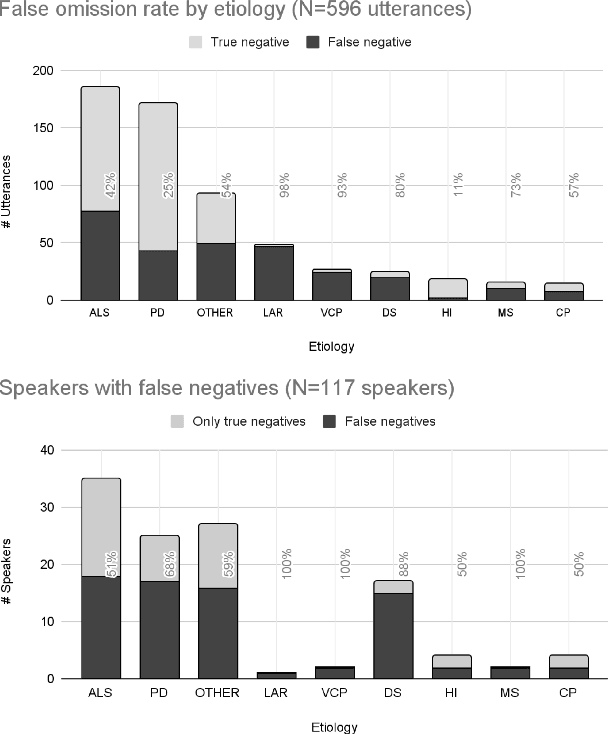
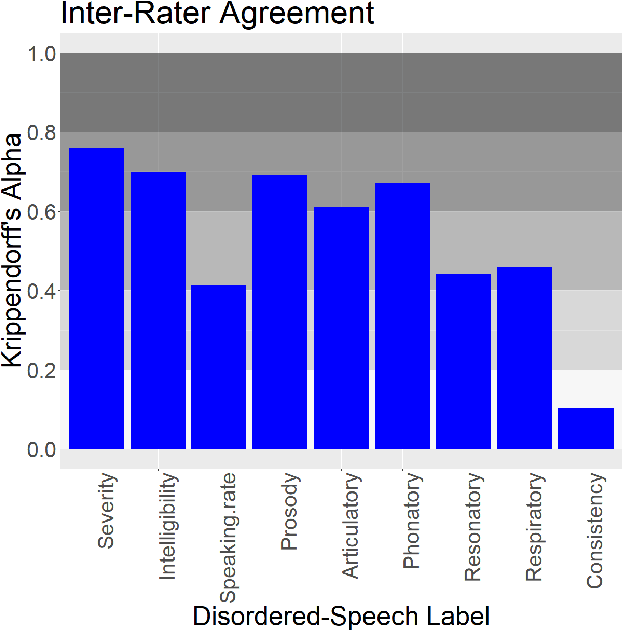
Abstract:Project Euphonia, a Google initiative, is dedicated to improving automatic speech recognition (ASR) of disordered speech. A central objective of the project is to create a large, high-quality, and diverse speech corpus. This report describes the project's latest advancements in data collection and annotation methodologies, such as expanding speaker diversity in the database, adding human-reviewed transcript corrections and audio quality tags to 350K (of the 1.2M total) audio recordings, and amassing a comprehensive set of metadata (including more than 40 speech characteristic labels) for over 75\% of the speakers in the database. We report on the impact of transcript corrections on our machine-learning (ML) research, inter-rater variability of assessments of disordered speech patterns, and our rationale for gathering speech metadata. We also consider the limitations of using automated off-the-shelf annotation methods for assessing disordered speech.
Speech Intelligibility Classifiers from 550k Disordered Speech Samples
Mar 15, 2023Abstract:We developed dysarthric speech intelligibility classifiers on 551,176 disordered speech samples contributed by a diverse set of 468 speakers, with a range of self-reported speaking disorders and rated for their overall intelligibility on a five-point scale. We trained three models following different deep learning approaches and evaluated them on ~94K utterances from 100 speakers. We further found the models to generalize well (without further training) on the TORGO database (100% accuracy), UASpeech (0.93 correlation), ALS-TDI PMP (0.81 AUC) datasets as well as on a dataset of realistic unprompted speech we gathered (106 dysarthric and 76 control speakers,~2300 samples).
Assessing ASR Model Quality on Disordered Speech using BERTScore
Sep 21, 2022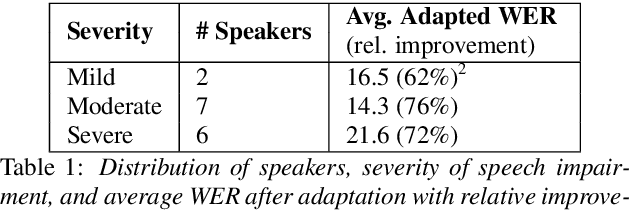
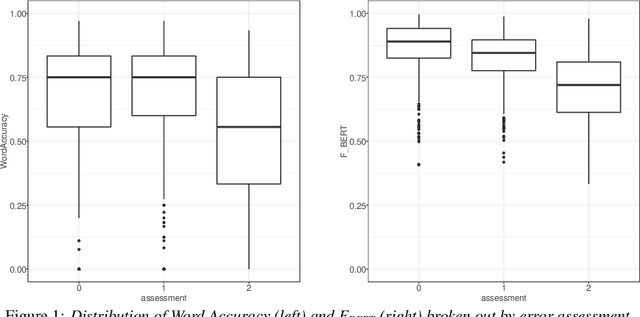
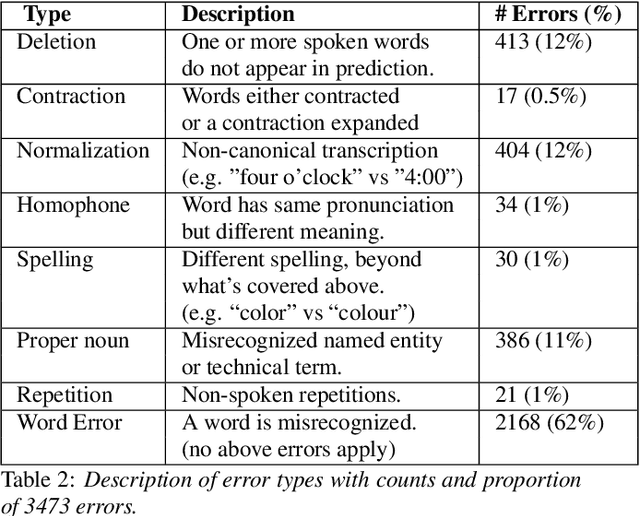
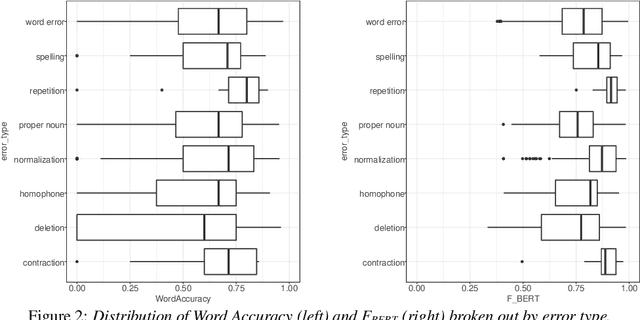
Abstract:Word Error Rate (WER) is the primary metric used to assess automatic speech recognition (ASR) model quality. It has been shown that ASR models tend to have much higher WER on speakers with speech impairments than typical English speakers. It is hard to determine if models can be be useful at such high error rates. This study investigates the use of BERTScore, an evaluation metric for text generation, to provide a more informative measure of ASR model quality and usefulness. Both BERTScore and WER were compared to prediction errors manually annotated by Speech Language Pathologists for error type and assessment. BERTScore was found to be more correlated with human assessment of error type and assessment. BERTScore was specifically more robust to orthographic changes (contraction and normalization errors) where meaning was preserved. Furthermore, BERTScore was a better fit of error assessment than WER, as measured using an ordinal logistic regression and the Akaike's Information Criterion (AIC). Overall, our findings suggest that BERTScore can complement WER when assessing ASR model performance from a practical perspective, especially for accessibility applications where models are useful even at lower accuracy than for typical speech.
Personalized Automatic Speech Recognition Trained on Small Disordered Speech Datasets
Oct 09, 2021
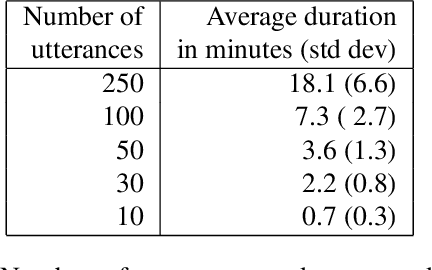


Abstract:This study investigates the performance of personalized automatic speech recognition (ASR) for recognizing disordered speech using small amounts of per-speaker adaptation data. We trained personalized models for 195 individuals with different types and severities of speech impairment with training sets ranging in size from <1 minute to 18-20 minutes of speech data. Word error rate (WER) thresholds were selected to determine Success Percentage (the percentage of personalized models reaching the target WER) in different application scenarios. For the home automation scenario, 79% of speakers reached the target WER with 18-20 minutes of speech; but even with only 3-4 minutes of speech, 63% of speakers reached the target WER. Further evaluation found similar improvement on test sets with conversational and out-of-domain, unprompted phrases. Our results demonstrate that with only a few minutes of recordings, individuals with disordered speech could benefit from personalized ASR.
Comparing Supervised Models And Learned Speech Representations For Classifying Intelligibility Of Disordered Speech On Selected Phrases
Jul 08, 2021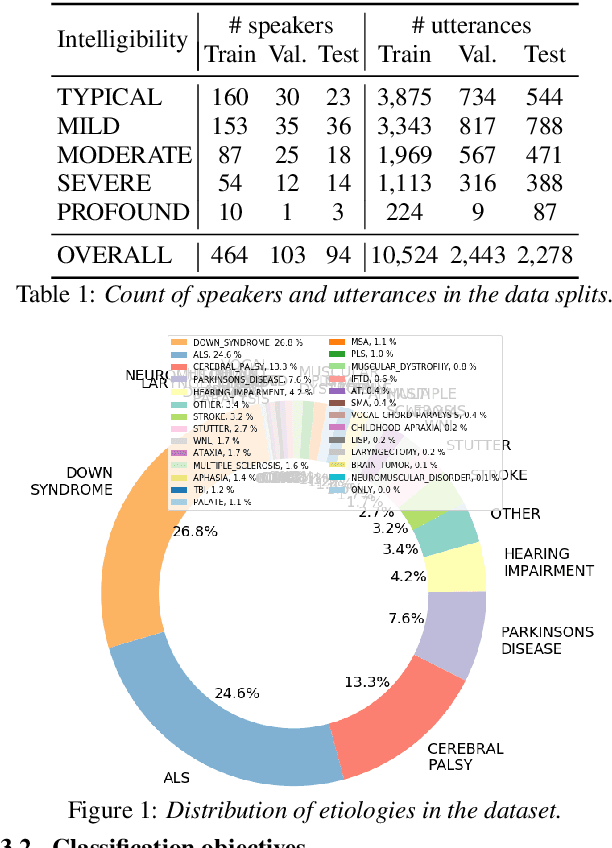
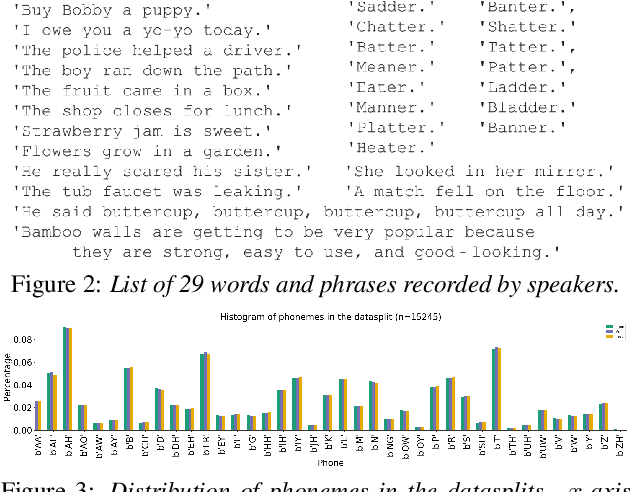
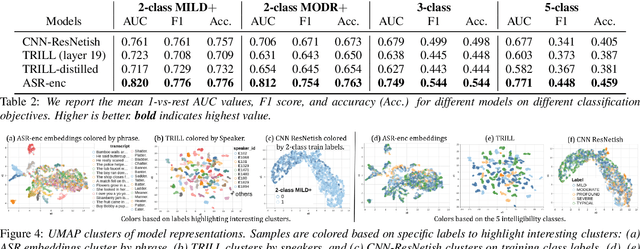
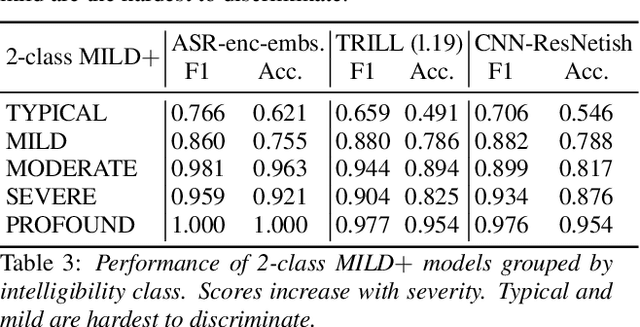
Abstract:Automatic classification of disordered speech can provide an objective tool for identifying the presence and severity of speech impairment. Classification approaches can also help identify hard-to-recognize speech samples to teach ASR systems about the variable manifestations of impaired speech. Here, we develop and compare different deep learning techniques to classify the intelligibility of disordered speech on selected phrases. We collected samples from a diverse set of 661 speakers with a variety of self-reported disorders speaking 29 words or phrases, which were rated by speech-language pathologists for their overall intelligibility using a five-point Likert scale. We then evaluated classifiers developed using 3 approaches: (1) a convolutional neural network (CNN) trained for the task, (2) classifiers trained on non-semantic speech representations from CNNs that used an unsupervised objective [1], and (3) classifiers trained on the acoustic (encoder) embeddings from an ASR system trained on typical speech [2]. We found that the ASR encoder's embeddings considerably outperform the other two on detecting and classifying disordered speech. Further analysis shows that the ASR embeddings cluster speech by the spoken phrase, while the non-semantic embeddings cluster speech by speaker. Also, longer phrases are more indicative of intelligibility deficits than single words.
 Add to Chrome
Add to Chrome Add to Firefox
Add to Firefox Add to Edge
Add to Edge